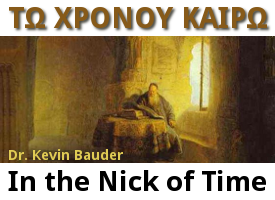Conservative Evangelicals Acting Like Fundamentalists

During the half century that I have been connected with fundamentalism, crusading anti-Calvinism has been a recurring phenomenon. The first episode that I distinctly remember occurred within the Regular Baptist movement during the 1970s. An evangelist went on a tear against a proposal that would have inserted a mildly Calvinistic statement into the GARBC confession of faith. A few years later an independent Baptist evangelist published a small book about why he disagreed with all five points of Calvinism. Unfortunately, he defined Calvinism so badly that even Calvin would have disagreed with all five points.
Crusading anti-Calvinism still pops up every now and then. About a decade ago a Baptist association in Illinois passed a couple of resolutions that misrepresented Calvinism in terms that can only be called slanderous. Then about five years ago a couple of preachers used platforms provided by the Fundamental Baptist Fellowship to deliver dire warnings against Calvinism. Crusading anti-Calvinism is alive and well within fundamentalism.
To be fair, so is irascible Calvinism. For example, the aforementioned evangelist in the GARBC reacted so shrilly because the proposed addition to the doctrinal statement could have disenfranchised the less Calvinistic churches of the Regular Baptist fellowship. His concerns were underlined by the appearance of a book that questioned the Baptist standing of non-Calvinists. While his responses were certainly excessive, they were not groundless.
Some Calvinists treat the doctrines of grace as if they are the sum and substance of the faith. They seem to believe that a denial of any of the five points constitutes a denial of the gospel itself. They love to throw around epithets like “semi-Pelagianism” and to depict their non-Calvinistic interlocutors as either incompetent or nearly heretical.
Discussion
Fundamentalism and Racism
Discussion
2012 StandPoint Conference Session 1: A Bridge Too Far
Speaker: Phil Johnson
Companion paper here.
Discussion